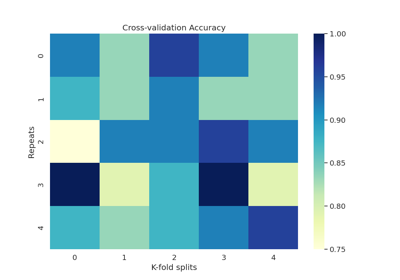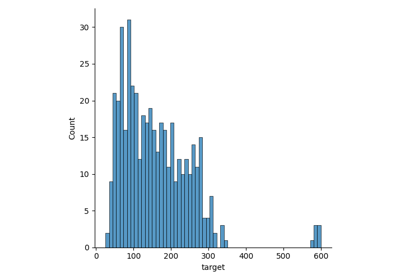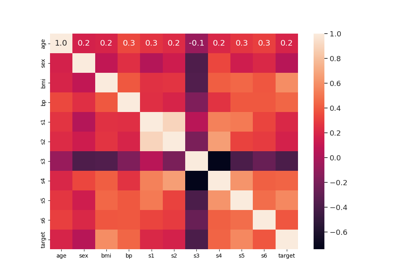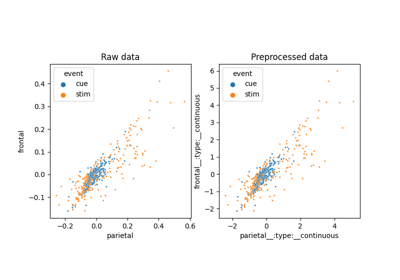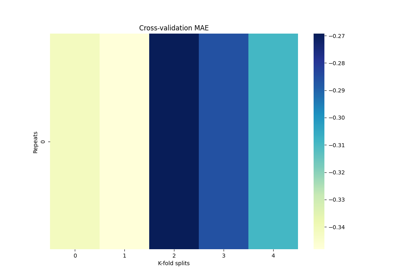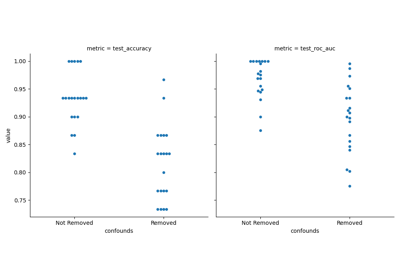Note
This page is a reference documentation. It only explains the function signature, and not how to use it. Please refer to the What you really need to know section for the big picture.
julearn.run_cross_validation#
- julearn.run_cross_validation(X, y, model, X_types=None, data=None, problem_type=None, preprocess=None, return_estimator=None, return_inspector=False, return_train_score=False, cv=None, groups=None, scoring=None, pos_labels=None, model_params=None, search_params=None, seed=None, n_jobs=None, verbose=0)#
Run cross validation and score.
- Parameters:
- Xlist of str
The features to use. See Data for details.
- ystr
The targets to predict. See Data for details.
- modelstr or scikit-learn compatible model.
If string, it will use one of the available models.
- X_typesdict[str, list of str]
A dictionary containing keys with column type as a str and the columns of this column type as a list of str.
- datapandas.DataFrame | None
DataFrame with the data (optional). See Data for details.
- problem_typestr
The kind of problem to model.
Options are:
“classification”: Perform a classification in which the target (y) has categorical classes (default). The parameter pos_labels can be used to convert a target with multiple_classes into binary.
“regression”. Perform a regression. The target (y) has to be ordinal at least.
- preprocessstr, TransformerLike or list or PipelineCreator | None
Transformer to apply to the features. If string, use one of the available transformers. If list, each element can be a string or scikit-learn compatible transformer. If None (default), no transformation is applied.
See documentation for details.
- return_estimatorstr | None
Return the fitted estimator(s). Options are:
‘final’: Return the estimator fitted on all the data.
‘cv’: Return the all the estimator from each CV split, fitted on the training data.
‘all’: Return all the estimators (final and cv).
- return_inspectorbool
Whether to return the inspector object (default is False)
- return_train_scorebool
Whether to return the training score with the test scores (default is False).
- cvint, str or cross-validation generator | None
Cross-validation splitting strategy to use for model evaluation.
Options are:
None: defaults to 5-fold
int: the number of folds in a (Stratified)KFold
CV Splitter (see scikit-learn documentation on CV)
An iterable yielding (train, test) splits as arrays of indices.
- groupsstr | None
The grouping labels in case a Group CV is used. See Data for details.
- scoringScorerLike, optional
The scoring metric to use. See https://scikit-learn.org/stable/modules/model_evaluation.html for a comprehensive list of options. If None, use the model’s default scorer.
- pos_labelsstr, int, float or list | None
The labels to interpret as positive. If not None, every element from y will be converted to 1 if is equal or in pos_labels and to 0 if not.
- model_paramsdict | None
If not None, this dictionary specifies the model parameters to use
The dictionary can define the following keys:
‘STEP__PARAMETER’: A value (or several) to be used as PARAMETER for STEP in the pipeline. Example: ‘svm__probability’: True will set the parameter ‘probability’ of the ‘svm’ model. If more than option is provided for at least one hyperparameter, a search will be performed.
- search_paramsdict | None
Additional parameters in case Hyperparameter Tuning is performed, with the following keys:
- ‘kind’: The kind of search algorithm to use, e.g.:
‘grid’ or ‘random’. Can be any valid julearn searcher name or scikit-learn compatible searcher.
- ‘cv’: If a searcher is going to be used, the cross-validation
splitting strategy to use. Defaults to same CV as for the model evaluation.
- ‘scoring’: If a searcher is going to be used, the scoring metric to
evaluate the performance.
See Hyperparameter Tuning for details.
- seedint | None
If not None, set the random seed before any operation. Useful for reproducibility.
- n_jobsint, optional
Number of jobs to run in parallel. Training the estimator and computing the score are parallelized over the cross-validation splits.
Nonemeans 1 unless in ajoblib.parallel_backendcontext.-1means using all processors (default None).- verbose: int
Verbosity level of outer cross-validation. Follows scikit-learn/joblib converntions. 0 means no additional information is printed. Larger number generally mean more information is printed. Note: verbosity up to 50 will print into standard error, while larger than 50 will print in standrad output.
- Returns:
- scorespd.DataFrame
The resulting scores (one column for each score specified). Additionally, a ‘fit_time’ column will be added. And, if
return_estimator='all'orreturn_estimator='cv', an ‘estimator’ columns with the corresponding estimators fitted for each CV split.- final_estimatorobject
The final estimator, fitted on all the data (only if
return_estimator='all'orreturn_estimator='final')- inspectorInspector | None
The inspector object (only if
return_inspector=True)
Examples using julearn.run_cross_validation#
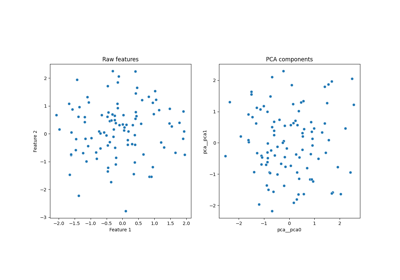
Preprocessing with variance threshold, zscore and PCA


